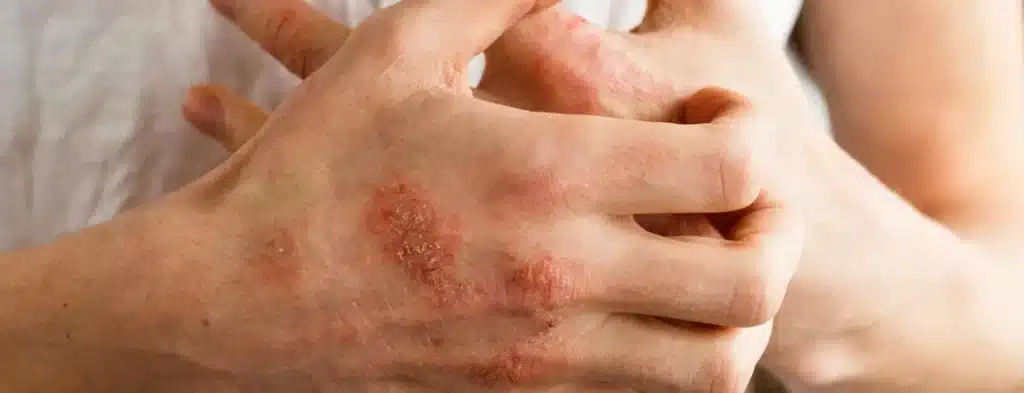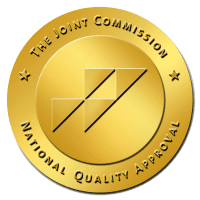Did you know that around two to five percent of the population picks their skin to the point that it causes damage and decreases the quality of life? Skin picking can be linked back to mental health disorders. However, there are also other triggers or causes, including drug abuse.
If you’re struggling with addiction and skin picking, it’s important to understand the drugs that cause skin picking and how to move forward. Keep reading to learn about how these two conditions relate to each other.
Understanding Dermatillomania
Dermatillomania, also known as excoriation disorder or skin-picking disorder, is a condition that goes beyond the occasional scratch or blemish removal. It involves repetitive and compulsive picking of the skin to the point where it causes damage and distress.
While many people may engage in some form of skin picking from time to time, for individuals with dermatillomania, this behavior becomes excessive and difficult to control. The urge to pick can be overwhelming, leading to hours spent focused on finding imperfections on the skin.
The exact cause of dermatillomania remains unknown. However, research suggests a combination of genetic, environmental, and psychological factors contribute to its development. Some studies have shown a potential link between certain neurotransmitters in the brain and an increased risk of developing this disorder.
How Drug Abuse Affects Skin Picking
One interesting aspect of dermatillomania is its association with drug use. While drugs do not directly cause this condition, they can potentially worsen symptoms for those who are already predisposed to it.
Heightened Feelings
When individuals engage in drug abuse that would benefit from rehab, they may experience heightened levels of anxiety, stress, and restlessness. These feelings can intensify the urge to pick at the skin. It’s often used as a way to cope with these emotions.
Additionally, certain drugs can alter brain chemistry and contribute to impulsive behaviors like skin picking.
Increased Dopamine
Drugs that affect dopamine levels in the brain are particularly problematic when it comes to skin-picking disorders. Stimulant drugs like cocaine or amphetamines increase dopamine release and enhance feelings of pleasure and reward.
This can lead individuals to engage in repetitive behaviors such as skin picking as a form of self-stimulation or gratification.
Physical Changes
Some substances cause physical changes in the body that increase susceptibility to skin picking. For example, methamphetamine use can lead to severe acne breakouts known as “meth sores.” The presence of these visible blemishes may trigger compulsive behavior related to intense itching or perceived imperfections on the skin.
Drugs That Cause Skin Picking

Certain drugs can trigger or exacerbate skin-picking behaviors. There are several drugs we want to look at here including some prescription medications.
Methamphetamines
Meth users may experience intense itching and crawling sensations under the skin. This can lead to picking at the skin to relieve these sensations.
This behavior often leads to what are commonly known as meth sores.
Cocaine
Similar to meth, cocaine can cause intense feelings of pleasure and increased energy. However, it can also cause intense itching and crawling sensations under the skin.
Cocaine use can also cause vasoconstriction. This narrows blood vessels and decreases blood flow to certain areas of the body. This can result in numbness or tingling sensations on the skin, making it easier for individuals to pick at their skin without feeling pain.
Opioids
Opioids can cause intense itching due to the release of histamines in the body. Histamines are chemicals that trigger an inflammatory response in the body and can cause itching.
Individuals may pick at their skin to alleviate this itching sensation. Additionally, long-term opioid use can lead to dry, itchy skin, which can also trigger skin-picking behaviors.
Steroids
Steroids, such as corticosteroids used for medical purposes or anabolic steroids used for performance enhancement, can cause acne and other skin issues. These side effects can lead to picking at the skin.
Additionally, withdrawing from steroids after long-term use can cause intense itching as a withdrawal symptom. This may also contribute to skin picking.
Antidepressants
Some antidepressant medications have been linked to increased compulsive behaviors, including skin picking. Selective serotonin reuptake inhibitors (SSRIs) such as Prozac and Zoloft have been known to cause this side effect in some individuals.
Individuals taking these medications should be monitored closely for any changes in behavior or new compulsive behaviors such as skin picking.
Risks and Complications of Skin Picking
Skin picking can have several risks and complications. While it may seem like a harmless habit to some, the truth is that excessive skin picking can lead to various negative consequences for both physical and mental health.
Infection
One of the most common risks associated with skin picking is infection. When you repeatedly pick at your skin, you create open wounds susceptible to bacterial or fungal infections. These infections can be painful and may require medical intervention such as antibiotics or antifungal medications.
Scarring
Constantly picking at your skin can leave behind permanent marks or scars, which can affect your self-esteem and body image. These scars may take a long time to fade or might even be irreversible.
Psychological Effects
In addition to physical complications, excessive skin picking has psychological effects. Many individuals who engage in this behavior experience feelings like:
- Shame
- Guilt
- Embarrassment
- Anxiety about their appearance
This can lead to social isolation and difficulties in relationships.
In addition, some people use drugs as a coping mechanism for dealing with the emotional distress caused by their compulsive skin-picking habits. This creates a vicious cycle where drug abuse worsens the urge to pick while also exacerbating any existing mental health issues.
Chronic skin-picking disorders often coexist with other mental health issues and psychiatric conditions, such as anxiety disorders or obsessive-compulsive disorder (OCD). The presence of these comorbidities further complicates treatment approaches. It requires comprehensive care from healthcare professionals specializing in both addiction and mental health.
Treating Skin Picking Disorders

When it comes to treating skin-picking disorders, the approach may vary depending on the severity and underlying causes of the condition. It’s important to remember that there is no one-size-fits-all solution. Each individual’s situation is unique.
However, several treatment options have shown promising results in managing dermatillomania.
Therapy
Cognitive-behavioral therapy (CBT) has proven to be effective in treating skin-picking disorders. CBT helps individuals identify triggers and develop coping mechanisms to interrupt the urge to pick their skin. Additionally, acceptance and commitment therapy (ACT) can help individuals build mindfulness skills and find alternative ways of dealing with stress or anxiety.
Medication
In some cases, medication may be prescribed alongside therapy for those struggling with severe symptoms or co-existing mental health conditions such as depression or anxiety disorder. Antidepressants and anti-anxiety medications are commonly used to manage symptoms related to skin-picking disorders.
Habit Reversal Training
This behavioral technique aims to replace the habit of skin picking with more constructive behaviors. It increases self-awareness by monitoring triggers and engaging in competing responses. Competing responses could include clenching fists or rubbing hands together when temptations arise.
Support Groups
Connecting with others with similar experiences can provide invaluable support during recovery from a skin-picking disorder. Support groups offer a safe space for individuals to share their struggles, gain insights from others’ journeys, and receive encouragement.
Dermatology Approaches
Sometimes, addressing any underlying dermatological issues can also play a crucial role in reducing compulsive skin-picking behavior. Treating any existing acne or other skin conditions can alleviate feelings of distress associated with imperfect appearance that often trigger episodes of picking.
Addiction Treatment
In cases where skin-picking disorders are linked to drug abuse, seeking professional help for addiction treatment is necessary. This could involve combining therapy and support groups with a structured addiction recovery program.
Self-Care Strategies
In addition to professional treatment, there are also self-care strategies that individuals can implement to manage their skin-picking behaviors. These include the following:
- Identifying triggers and finding ways to avoid or cope with them
- Keeping the hands busy with stress balls, fidget spinners, or other objects
- Practicing relaxation techniques such as deep breathing or meditation
- Keeping the skin clean and moisturized to reduce the urge to pick at imperfections
- Utilizing distractions such as hobbies, exercise, or social activities when feeling the urge to pick
- Seeking out positive affirmations and self-talk to counter negative thoughts about one’s appearance
It’s essential to remember that recovery from a skin-picking disorder takes time and patience. Seeking professional help and implementing self-care strategies can significantly increase the chances of successfully managing this condition.
Seeking Help for Addiction and Skin Picking

If you or someone you know is struggling with addiction and skin picking, it’s crucial to seek professional help. Tackling these issues alone can be overwhelming and may lead to further complications. It’s okay to ask for help.
The first step towards recovery is acknowledging the problem. Admitting that you need help is a brave decision that can pave the way for positive change.
Get in touch with a healthcare provider or counselor you trust. They can evaluate your situation and suggest treatments.
Get the Help You Need for Recovery at Purpose
The drugs that cause skin-picking can exacerbate behaviors and lead to further complications. To find a path to recovery, it’s important to understand what causes addiction and skin picking and how they can be treated.
At Purpose Healing Center, we’ll work with you to create a holistic and individualized action plan. Contact us today to find the treatment you need.



